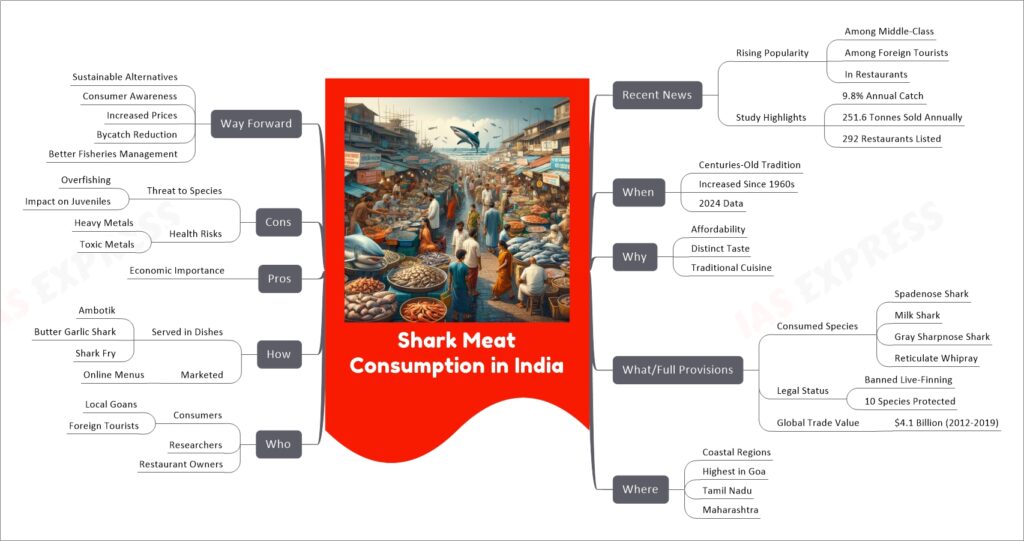Shark Meat Consumption in India

Shark meat consumption in India has been a traditional practice for centuries, primarily among tribal and coastal communities. Recently, there has been a significant rise in its popularity, especially among middle-class consumers and foreign tourists, with approximately 251.6 tonnes of shark meat being sold annually in Indian restaurants. This increase poses a threat to shark species, many of which are already facing extinction due to overfishing. A notable shift has occurred since the 1960s, with an expansion in the variety of sharks consumed, including endangered species. The consumption is highest in states like Goa, Tamil Nadu, and Maharashtra. The rise in shark meat demand has led to concerns regarding sustainability and the impact on marine ecosystems, prompting suggestions for increased consumer awareness, sustainable alternatives, and better fisheries management.
If you like this post, please share your feedback in the comments section below so that we will upload more posts like this.

